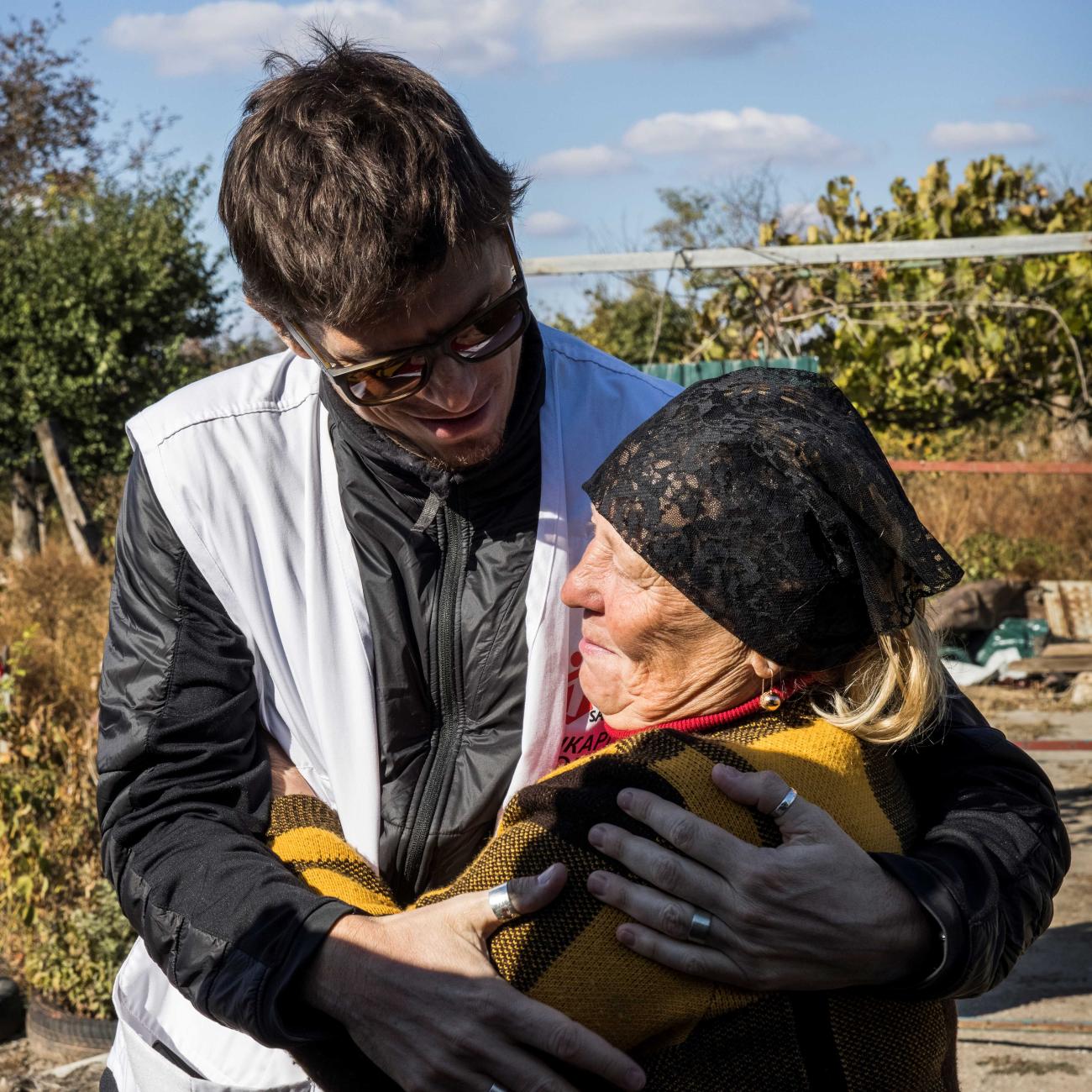Early in the coronavirus pandemic, lockdowns forced billions of people to stay home. Unfortunately, all of the extra time spent sequestered together may have exposed many to higher levels of secondhand smoke (SHS).
Between March and May 2020, 2.6 billion people worldwide were living in areas with some form of stay-at-home guidance. With individuals limited to existing in primarily one space and with tobacco consumption increasing due to pandemic-induced stress, anxiety, and isolation, non-smokers potentially faced higher levels of household SHS exposure in many countries around the world. As we look to protect against one airborne attacker, SARS-CoV-2, combatting exposure to tobacco smoke at home should be a high priority, too.
63 percent of U.S. households with a daily smoker allowed smoking indoors during COVID stay-at-home orders
Tobacco smoke can be deadly. It contains a number of poisonous gases and chemicals that increase the risk of lung cancer, stroke, ischemic heart disease, and various respiratory diseases. It was linked to 1.3 million deaths worldwide in 2019.
SHS exposure also poses dangers to the health of children, including an increased risk of lung problems—lower respiratory infections and severe asthma. Predictors of children's SHS exposure at home include parental smoking, or living in a low-income household, research shows.
Along with children, women face a greater burden of exposure to SHS at home, especially in low- and middle-income countries where the gender gap in smoking is wide. Issues at the intersection of gender roles, economic status, and race oftentimes make it more difficult for women to protect themselves and their children from SHS. With increased SHS exposure, in the long term, women may be at higher risk for developing and dying from breast cancer.
While many countries are now in reopening phases, the pandemic is becoming worse or is still severe in others, including Brazil and India. As the world continues to work to mitigate the impact of COVID-19 and prepare for the next pandemic, it is vital that health leaders consider measures aimed at eliminating exposure to SHS and increasing clean indoor air. Given that engineering approaches, including ventilation and air cleaning, cannot fully remove the risk of SHS exposure, banning smoking in public spaces through smoke-free initiatives, encouraging the voluntary adoption of indoor smoking restrictions at home, and increasing smoking cessation programs are ways to protect non-smokers.
Secondhand smoke exposure may have been higher for many people sequestered at home during COVID-19 lockdowns
By the end of 2018, 62 countries had adopted smoke-free policies that covered all indoor public places, protecting 22 percent of the world’s population from the dangers of SHS. However, legislating smoking in private spaces has been part of a fierce debate about what accounts for infringements on the personal freedoms and rights of citizens, and household smoking restrictions have traditionally been established through voluntary rules. Yet, prohibiting smoking in living units and common areas of multi-unit housing facilities is legally permissible and is emerging as an important strategy to address smoking and passive smoking.
Still, in many countries, smokers are lighting up indoors during lockdowns in the majority of households. When we analyzed results from a 2020 online survey of tobacco smoking behaviors in 17 countries with varying levels of smoking prevalence, we found that 63 percent of U.S. households with a daily smoker allowed smoking indoors during COVID stay-at-home orders.
The proportion of smokers' households that allow smoking indoors hit 86 percent in India, the new epicenter of the pandemic. Alarmingly, in all of the countries we studied, having children in the household did not appear to deter people from smoking indoors. Promoting smoke-free homes could be a pivotal step in protecting non-smokers from SHS, particularly in low- and middle-income countries where the number of smokers is on the rise and above-average household sizes threaten to put more people at risk. For example, while the global average is 4.9 residents per household, in Yemen, where 91 percent of smokers' households had liberal smoking rules, the average household size is more than eight people.
To increase the adoption of smoke-free homes, it is important for governments and other decision-makers to invest in anti-tobacco campaigns and interventions that educate smokers. National anti-tobacco campaigns delivered through TV and social media channels can reach people's homes easily, reducing the need for in-person counseling. The "Some Things Are Better Outside" program in the United States, designed to promote smoke-free homes in lower-income households, mailed educational materials to households and provided coaching calls from a program specialist to educate people about the dangers of SHS. India’s “Quit Tobacco” program engaged women's groups and community leaders to raise consciousness about the dangers of SHS. Both showed encouraging results when it came to adoption, implementation, and effectiveness of the programs, and outcomes were seen in a short timeframe.
Interventions tailored to households with children might benefit from video messages [compared to text-only messages] which could have a greater influence on parents who smoke. As we seek to protect non-smokers' health, we must also help smokers break free of addiction. It is vital for countries to invest in effective telephone and online smoking cessation programs, nicotine replacement therapy, and additional support for smokers. Simply restricting access to tobacco products does not seem to be the most effective route to reducing smoking. For example, in an attempt to contain the spread of the coronavirus, South Africa imposed a sales ban on tobacco products but only a minority of smokers managed to quit, while the vast majority purchased cigarettes through the newly booming illegal tobacco market.
Increasing the number of smoke-free properties and homes around the world could improve the health of vulnerable individuals in particular. People living on lower incomes, and in situations such as prisons, homeless shelters, and shared apartments, face a unique double burden of increased exposure to SHS and COVID-19 as they have even fewer opportunities to practice physical distancing and protection from the virus and the tobacco smoke produced by others, particularly during lockdown.
In the United States, Black children and adults are more likely to be exposed to SHS. Black Americans and other individuals in minority groups are also at increased risk of developing severe illness from COVID-19—often due to issues tied to systemic racism. Decreased access to wealth, private housing, education, and health care all intersect to expose communities to worse health outcomes and require careful consideration when designing successful health interventions.
Ultimately, in addition to thinking about new strategies, countries must continue to make progress in implementing and enforcing strong evidence-based tobacco control policies such as tax increases that reduce the affordability of products, health warnings, and advertising bans. These measures reduce smoking, which in turn will reduce SHS exposure. We can also fight disproportionate passive smoking through indirect means by further advocating for gender equality, protecting the environment, minimizing socioeconomic inequalities, and dismantling institutions that preserve colonial inequities. Creating policies designed to address these intersecting issues could be a vital step toward creating sustainable protections for people around the world impacted by SHS and its harmful lifelong consequences.

Acknowledgements: The authors would like to thank Emmanuela Gakidou, Gabriela Gil, Maria Carmona, Hebe Gouda, Liping Pan, Adrienne Pizatella, Ernesto Sebrie, and Kevin Welding for reviewing the article.
EDITOR'S NOTE: The authors are employed by the University of Washington's Institute for Health Metrics and Evaluation (IHME) and receive funding from Bloomberg Philanthropies. IHME collaborates with the Council on Foreign Relations on Think Global Health. All statements and views expressed in this article are solely those of the individual authors and are not necessarily shared by their institution.




